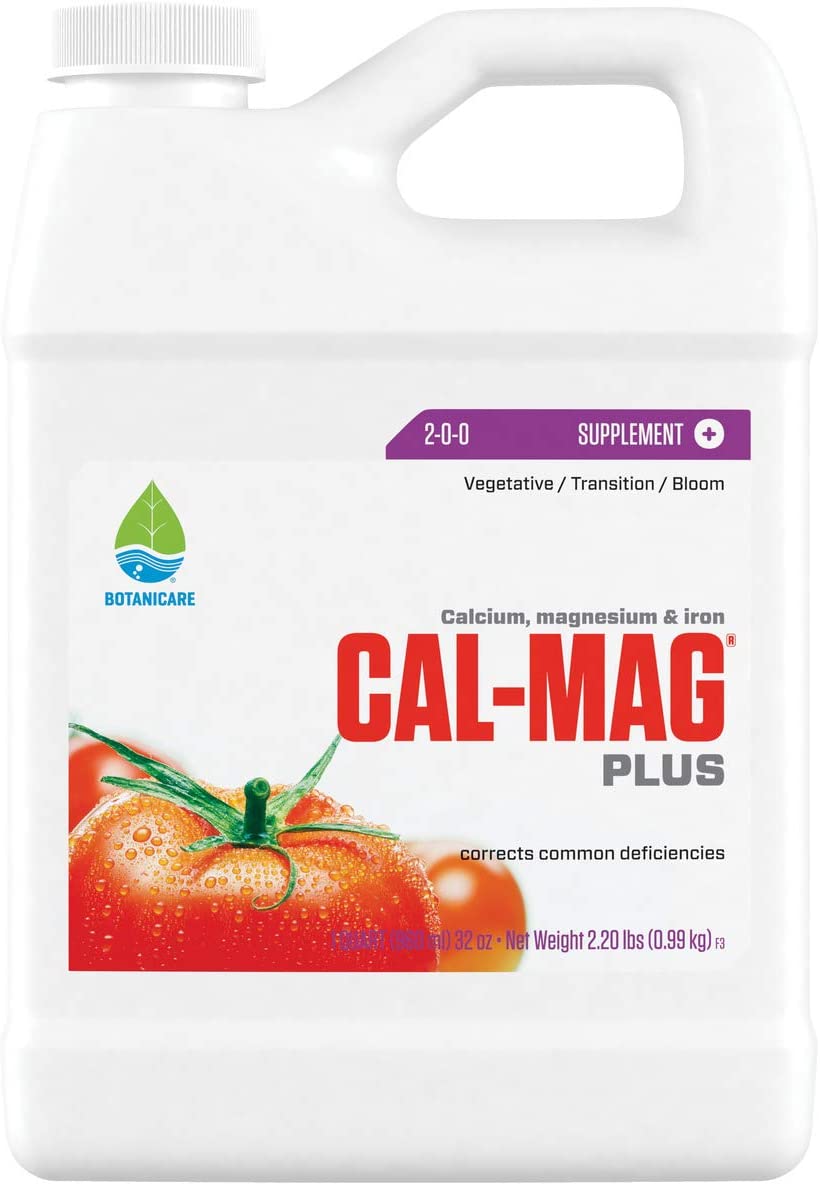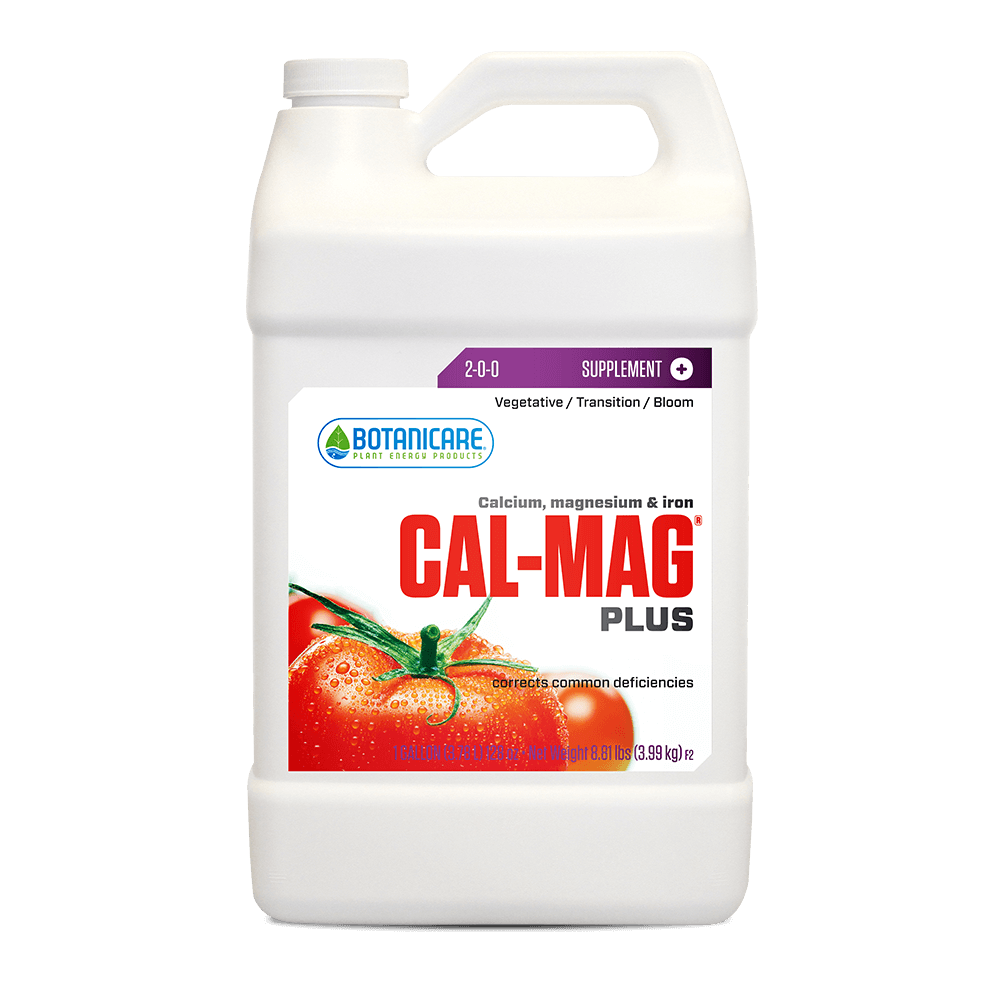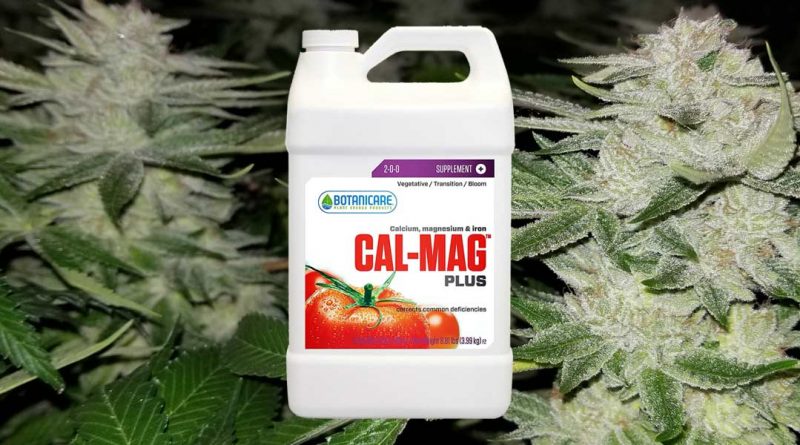
Before purchasing any old supplement with a few favorable reviews, if you’re seeking for a supplement to feed your plants, you need to learn about Cal-Mag.
Cal-Mag, a supplement for plants that contains essential elements required for achieving optimal growth and excellent harvests, comes highly recommended.
What is the purpose of Cal-Mag? Cal-Mag is a liquid dietary supplement that offers plants grown in soil or hydroponic systems the essential minerals calcium, magnesium, and iron. All plants require the micronutrients in Cal-Mag, but those that blossom or produce fruits or vegetables need them more than other types of plants.
However, Cal-Mag offers much more than the majority of popular plant supplements.
Find out why you should already be using it on your plants by reading on.
Table of Contents
The Importance of Calcium & Magnesium for Plants
Two of the most crucial elements for plants are calcium and magnesium.
Both calcium and magnesium contribute to boosting the pH of the soil or water used to grow plants.
Calcium is essential because it helps plants create new cells, which dramatically increases food harvests.
Calcium deficiency causes growth to slow down and produces fewer (or smaller) fruits, vegetables, or blossoms.
In contrast, the center core of chlorophyll molecules in plant tissue is magnesium.
In other words, it assists in capturing solar energy and transforming it into energy for plant development. Plants grow slowly or have stunted growth when there is a severe magnesium deficiency.
How To Identify a Cal-Mag Deficiency
Slow and stunted growth are the most visible symptoms of a Cal-Mag deficit. Localized decay on fresh leaves, fruits, blossoms, and buds is another telltale indicator of a Cal-Mag deficit.
Another indication of a Cal-Mag deficit is rotting and/or slowly expanding root systems, even though you might not be able to see them as clearly as the other symptoms.
If any of the aforementioned problems are not resolved, they eventually cause more harm, stunted growth, or even the slow demise of your plants.
What Does Cal-Mag Do for Plants?
Cal-Mag is made to prevent root and bloom rotting, tip burn, and harm to plants from nutrient deficiency.
Additionally, it is intended to generally maximize plant health on a whole, including growth states and yield sizes.
What Are the Benefits of Cal-Mag?
Giving plants Cal-Mag has a significant positive impact on their overall health and output.
You can be sure that your plants are receiving all the secondary nutrients they require when you feed them Cal-Mag.
The absence of root rot, scorched foliage, and overall unattractive and underwhelming plants is another advantage.
These advantages are made possible by the calcium, magnesium, and iron that the Cal-Mag supplement provides.
Do You Need Cal-Mag in Hydroponics?
Hydroponics benefits greatly from Cal-Mag, even though it is not strictly required.
But because hydroponic plants depend on liquid nutrients for both their life and growth, Cal-Mag can significantly improve the health of your plants.
Hydroponic plants require you to provide nutrients into their system in order for them to develop, unlike soil-based plants that leak nutrients.
Because it gives your plants healthy quantities of secondary nutrients that other products sometimes minimize, Cal-Mag is especially helpful in hydroponics.
How Do You Use Cal-Mag in Hydroponics?
Every time you replace the water in your hydroponic grow system, you can add Cal-Mag directly to the main reservoir.
Every time you top off the water level in the reservoir, you can also add it directly. Simply follow the instructions on the Cal-Mag product is all that is required.
Cal-Mag is typically added to your system by combining a measured amount with water, shaking the container, and then pouring the mixture into your reservoir.
Just be aware that you might need to modify your system’s pH levels before and/or after using Cal-Mag in your hydroponic system.
How Much Cal-Mag Should I Use?
Utilizing Cal-Mag is really simple. In a hydroponic system, all you need to do is add a teaspoon of powder or 5 milliliters of liquid for every gallon of water.
Pour the same quantity into your watering can for each gallon of water you use for soil-based cultivation.
To produce tomatoes in a hydroponic system with a 20-gallon tank, for instance, you must add 100 milliliters each time the water is changed.
In addition, fill a gallon jug with water and add anything from a half-teaspoon to a full teaspoon to top off the tank in between changes.
You can give your plants a gallon of water with 10 to 15 milliliters added as a booster. Both hydroponic and soil-based cultivation can be done using this.
Can I Mix Cal-Mag With Nutrients?
Nutrients and Cal-Mag can be utilized together. It can also be added either before or after fertilizer feedings to your plants.
Cal-Mag functions as an amplifying agent when combined with the right nutrients, significantly enhancing the rate at which plants absorb nutrients.
What Is the Best Cal-Mag Supplement for Plants?
All of the Cal-Mag products are specialist plant supplements, making them straightforward purchases for gardeners who wish to take extra care of their plants and produce exceptional yields.
Cal-Mag Plus is unquestionably the best Cal-Mag Supplement for plants overall.
Here, we’ll examine more closely at Cal-Mag Plus and discover why it’s the go-to plant supplement for landscapers everywhere.
Botanicare Cal-Mag Plus
A specifically developed solution called Cal-Mag Plus is used to strengthen plants. It is used successfully to prevent deficiencies, which are frequently observed in plants deficient in micronutrients.
Low calcium, magnesium, and/or iron levels can lead to imbalances in plants, which the Cal-Mag Plus mix treats.
It is effective as a nutritional booster for your plants as well as for routine watering schedules.
The fact that Cal-Mag Plus performs admirably in practically every growth media and system—including hydroponics, soil, LECA, coco coir, and others—is even more astounding. Its NPK value is 2-0-0.
Pros:
- to be sprayed or used in water.
- provides iron, magnesium, and calcium.
- most plant types can be used with this.
- for use in hydroponics, coco coir, soil, and containers.
Cons:
- Before use, it must be diluted with water.
Should I Use Cal-Mag Every Watering?
If your plants are not severely lacking in nutrients, you can use Cal-Mag with every watering, but it is not actually necessary.
You can add some Cal-Mag to the water you use for routine watering if your plants appear to be nutritionally deficient and clearly unwell.
If not, your plants won’t require Cal-Mag with every watering following a preliminary Cal-Mag treatment.
Additionally, you shouldn’t use Cal-Mag for more than one of your weekly watering sessions if you water more frequently than that.
Should I Use Cal-Mag During Flowering?
You should utilize Cal-Mag during the flowering phase of your plant’s growth cycles based solely on your own best judgment and opinion.
If your plant is healthy during flowering, you may still utilize it even though it may not be necessary for its overall health in order to produce outstanding blooms and/or fruit.
Can Cal-Mag Be Used for a Foliar Spray?
As a foliar spray, Cal-Mag, especially Cal-Mag Plus, performs admirably. Just combine it with water and use it to spray as normal.
Nevertheless, if you use Cal-Mag as a foliar spray, avoid applying other/similar treatments before or after because doing so could result in unfavorable outcomes, such as mildew or molding.
Should You Use Cal-Mag for Tomatoes?
One or two of the most important elements for developing fantastic tomatoes are calcium and magnesium.
Because of this, a lot of gardeners provide their tomatoes these two particular nutrients in whatever way they can, such as by continuously amending the soil with eggshells.
Stop chopping up nasty eggshells and scooping them out of the area around your tomato plants.
Replace that by putting a teaspoon of Cal-Mag in your water. By doing this, you eliminate the uncertainty surrounding whether or not your tomatoes will be plump and juicy.
Is Cal-Mag Good for All Plants?

Cal-Mag works great for almost every species you can imagine, and it’s difficult to overfeed plants with it, which is one of the best things about using it.
Will Cal-Mag Raise pH?
The pH levels may be slightly impacted in one direction or another depending on the Cal-Mag version you’re using.
Check the label of your Cal-Mag product to see how it affects pH levels.
When using Cal-Mag in hydroponic systems, it is strongly advised to test and adjust pH levels appropriately both before and after use (to account for Cal-regular Mag’s impact on your system’s pH).
Having a reliable pH tester on hand, like this one produced in America, will take the guesswork out of keeping the right pH levels for your plants.
Does Cal-Mag Raise EC?
It is a significant increase that Cal-Mag products may cause EC levels to rise by as much as 0.5. An EC of roughly 1.0 is the target for most hydroponic systems.
Since an incorrect EC level makes it difficult for plants to absorb water, nutrients, and oxygen, using Cal-Mag without first checking EC levels using an accurate tester like this could be harmful to your plants.
Is Cal-Mag Organic?
Cal-Mag is not entirely biological in all cases. However, the calcium and magnesium sources FoxFarm Bush Doctor, TPS Cal-Mag OAC, and Roots Organics Cal-Mag are 100 percent organic.
Products made with natural Cal-Mag don’t contain nitrogen, phosphate, or potassium.
Does Cal-Mag Have Nitrogen in It?
Some of the older Cal-Mag products still include nitrogen, which was primarily used in their manufacture.
However, several organic Cal-Mag products are available that contain no nitrogen at all.
What Is Cal-Mag Made Of?
Cal-basic Mag’s but effective ingredients are calcium and magnesium nitrate, while some varieties also include iron.
Additional micronutrients like zinc, copper, boron, manganese, sulfur, and fulvic acid may be included in some goods.
Does Cal-Mag Kill Microbes?
Microbes are not killed by cal-mag. However, if utilized in large quantities, the iron EDTA levels may possibly have an impact on microorganisms.
The problem with this theory is that the iron EDTA concentrations would kill the plants before they had any impact on the current microorganisms.
Can You Use Cal-Mag in Soil?
Cal-Mag can and ought to be utilized in soil without a doubt.
This is due to the fact that it considerably benefits the micronutrients that are present in the soil for plants to feed on, but has little effect on the primary level of macronutrients (or NPK) of plants.
In addition to the primary minerals nitrogen, phosphorus, and potassium, plants also require calcium and magnesium for growth and health.
Your plants will only be able to get these micronutrients through Cal-Mag.
How To Use Cal-Mag With Soil-Based Plants
Cal-Mag is very simple to apply to plants grown in soil. For each gallon of water, add one teaspoon of Cal-Mag.
Just like you would typically water your garden, apply the solution to it.
Before feeding your plants, add two teaspoons of Cal-Mag (a total of one teaspoon) to each gallon of water to speed up the growth of your plants.
How Much Is a Bottle of Cal-Mag?
Cal-Mag costs between $18 to $20 for a quart and between $35 and $40 for a gallon, depending on the merchant and the size of the product.
Nevertheless, there is a variety of Cal-Mag products available, and costs may change.
How Do You Make Homemade Cal-Mag?
Although Cal-Mag can be produced at home, its effectiveness in contrast to commercial Cal-Mag products cannot be guaranteed.
A DIY Cal-Mag solution can be created by combining two parts calcium and one part magnesium.
One tablespoon of calcium phosphate and one tablespoon of Epsom salt combined into one gallon of water is the standard measurement for DIY Cal-Mag.
Pro Tip: If you don’t have Epsom salt, you can use one tablespoon of molasses.
Does Cal-Mag Go Bad?
Although the actual shelf life of Cal-Mag is unknown, it is generally believed that the product takes a very long time to spoil.
Many gardeners assert that Cal-Mag continues to work even after being used for a while.
In any case, you won’t have to worry about it going bad if you utilize it within the first few years of getting it.
When Should I Stop Using Cal-Mag?
As soon as your plants start to show signs of recovery from the nutrient deficiency, you should cease applying Cal-Mag on them.
There is no need to keep putting Cal-Mag in the water every time you water your plants if they appear to be happy and healthy.

